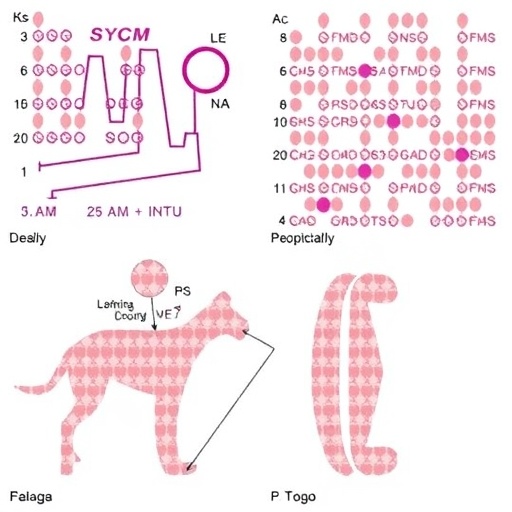Credit: Cazaux et al., 2019
In a study that will be published April 1 in the Journal of Experimental Medicine, researchers from the Institut Pasteur and INSERM reveal that chimeric antigen receptor (CAR) T cells can induce tumor regression by directly targeting and killing cancer cells, uncovering new details of how these immune cells work and how their effectiveness could be improved in the treatment of non-Hodgkin’s lymphoma and other B cell cancers.
CAR T cells are genetically engineered immune cells that can be custom-made to attack a patient’s tumor cells. For example, CAR T cells that target a protein called CD19, which is found on many lymphoma and leukemia cells, are an FDA-approved treatment for several B cell malignancies, including non-Hodgkin’s lymphoma and acute lymphoblastic leukemia.
However, some patients fail to respond to anti-CD19 CAR T cells, while others, after an initial improvement, suffer a relapse and develop therapy-resistant tumors that no longer express CD19. Philippe Bousso and colleagues at the Institut Pasteur believe that the key to improving treatment is to learn more about how CAR T cells work. For instance, it had remained unclear if CAR T cells kill the cancer cells themselves or whether they induce other immune cells to attack the tumor.
For the study, the researchers tracked the activity of anti-CD19 CAR T cells injected into mice with B cell lymphoma. Using a microscopy technique known as intravital two-photon imaging, Bousso and colleagues were able to see individual CAR T cells killing lymphoma cells in the animals’ bone marrow. Some CAR T cells appeared to be more active than others, but, in most cases, lymphoma cells died within minutes of coming into direct contact with a CAR T cell. This suggested that CAR T cells mainly kill their targets directly.
“Computer simulations based on our experimental data supported the idea that CAR T cells rely on their direct cytotoxic activity rather than on the recruitment and activation of other cells to eliminate the bulk of the B cell lymphoma in the bone marrow,” Bousso says.
The simulations also suggested that relatively small differences in the infiltration of CAR T cells into the bone marrow can substantially impact the treatment’s outcome. One reason why CAR T cells may fail to infiltrate the bone marrow is if they encounter lymphoma cells, or healthy B cells that also express CD19, circulating in the blood. Bousso and colleagues found that CAR T cells can aggregate with these circulating cells and become trapped in the lungs, preventing them from reaching the bone marrow. Reducing these encounters–for example, by temporarily reducing the number of circulating B cells–enhanced the ability of CAR T cells to infiltrate the bone marrow and kill tumor cells, prolonging the survival of mice with B cell lymphoma.
“Purging both circulating tumor and normal B cells prior to CAR T cell transfer may therefore offer a clinical benefit by improving CAR T cell engraftment and persistence,” Bousso says.
Still, the researchers found that tumor relapse and the emergence of tumors lacking CD19 occur in the bone marrow, rather than in other organs affected by B cell lymphoma, such as the lymph nodes. This appears to be because CAR T cells are not as active in these other organs, reducing the incentive for tumor cells to lose the CD19 protein.
“In sum, our results reveal the large diversity in CAR T cell behaviors in distinct anatomical sites impacting engraftment, anti-tumor activity, and tumor relapse,” Bousso says. “Understanding these differences is an important step towards developing strategies to optimize CAR T cell-based treatments.”
###
Cazaux et al. 2019. J. Exp. Med. http://jem.
About the Journal of Experimental Medicine
The Journal of Experimental Medicine (JEM) features peer-reviewed research on immunology, cancer biology, stem cell biology, microbial pathogenesis, vascular biology, and neurobiology. All editorial decisions are made by research-active scientists in conjunction with in-house scientific editors. JEM makes all of its content free online no later than six months after publication. Established in 1896, JEM is published by Rockefeller University Press. For more information, visit jem.org.
Visit our Newsroom, and sign up for a weekly preview of articles to be published. Embargoed media alerts are for journalists only.
Follow JEM on Twitter at @JExpMed and @RockUPress.
Media Contact
Rory Williams
[email protected]
Related Journal Article
http://dx.




